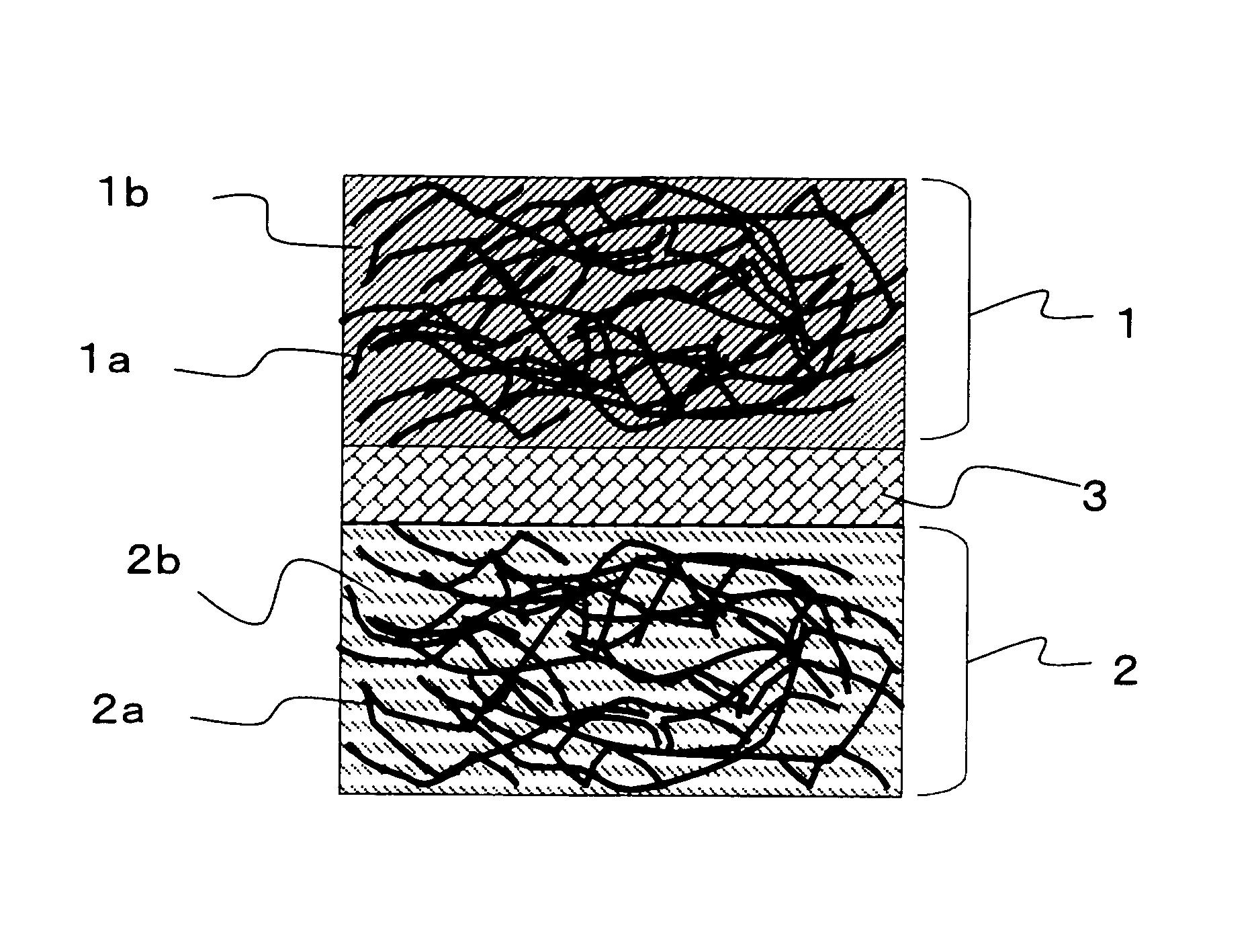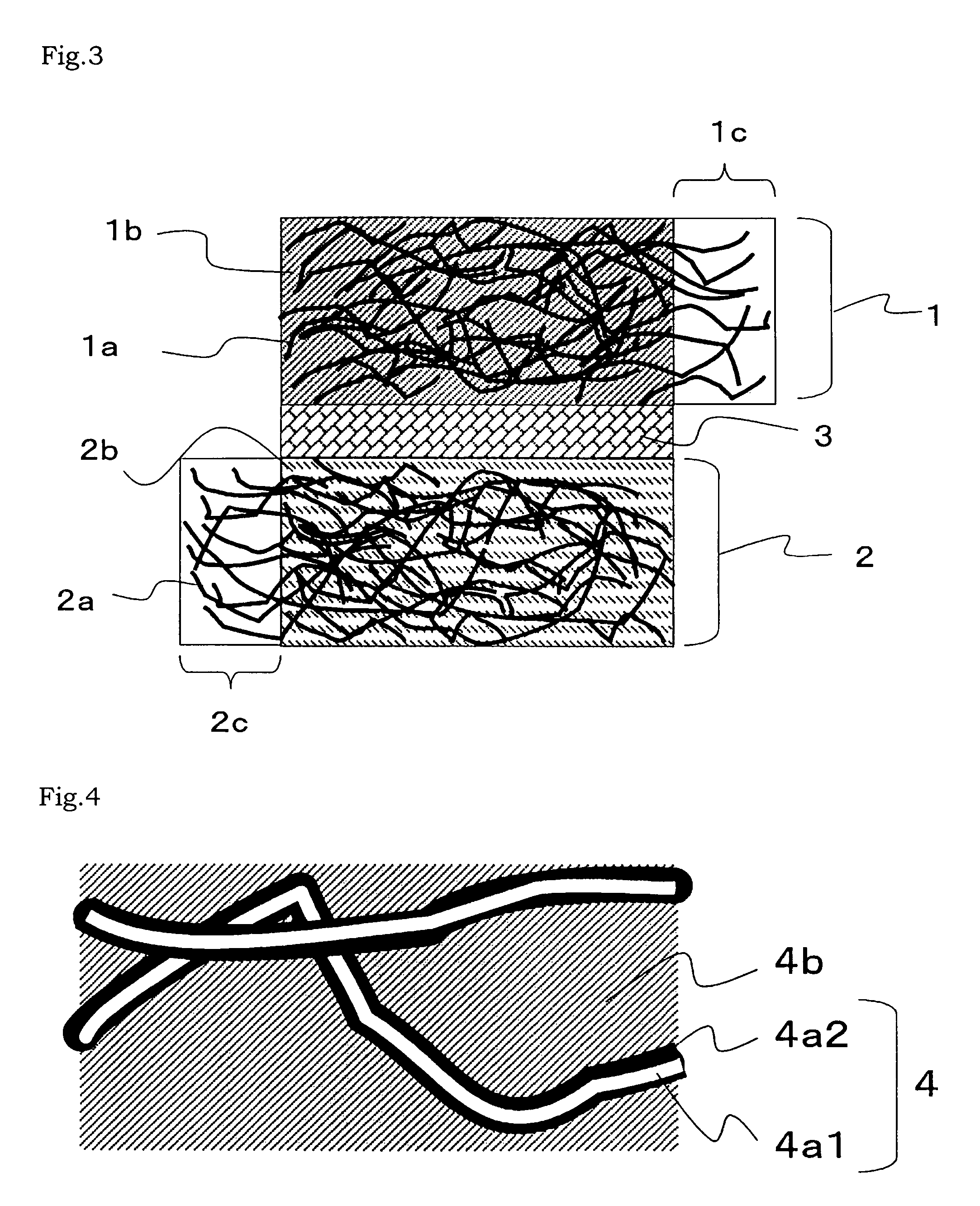Non-aqueous electrolyte secondary battery
a secondary battery and non-aqueous electrolyte technology, applied in the direction of electrochemical generators, cell components, cell components, etc., can solve the problems of low melting point fused resin film, abnormal condition of secondary battery with increased temperature, and failure of metal layer formed on the top thereof, so as to shorten the physical distance between a short circuit point and improve the response leading to an increase in resistance at the short circuit point. , the effect of enhancing safety
- Summary
- Abstract
- Description
- Claims
- Application Information
AI Technical Summary
Benefits of technology
Problems solved by technology
Method used
Image
Examples
example 1
[0086]As shown in FIG. 1, the secondary battery of Example 1 uses a collector which is a three-dimensional structure formed of a plurality of resin fibers covered with a metal film in both electrodes of the positive electrode and the negative electrode.
[0087]As the collector, OX-7617(T-3)282 which is a non-woven fabric available from Japan Vilene Company, Ltd. was used. As shown in FIG. 2, in this collector, the resin fiber 3a1 is a polyolefin resin fiber, and the metal film 3a2 is implemented by a nickel film formed by a plating method. The use amount of the resin fiber 3a1 per area of the collector is 85 g / m2, and the use amount of the metal film 3a2 per area of the collector is 215 g / m2. The collector has a thickness of 1.1 mm, a tensile strength of 260 N / 5 cm, a porosity of 92%, a surface resistance of 11 mΩ, a thermal deformation temperature of 120 to 180° C., and an endothermic peak of 130° C.
[0088]As the separator, a microporous film (Hipore available from Asahi Chemical Indu...
example 2
[0095]A secondary battery was obtained in a similar manner to Example 1 except that a separator having extremely high heat resistance (hereinafter, described as a high heat resistant article) was used to clarify the temperature relation between the separator and the resin of the porous member forming the collector.
[0096]Here, a secondary battery was fabricated in a similar manner to Example 1 except that a high heat resistant separator mainly composed of an aramid component was used.
[0097]The high heat resistant separator is BLC1420A available from Japan Vilene Company, Ltd. This separator has a highly thermostable shape characteristic as is evidenced from a deformation percentage of thermal contraction coefficient of 1% or less even at an elevated temperature of 230° C.
[0098]The size of the secondary battery in Example 2 was 10 cm wide, 19 cm long and 1 cm thick, and the battery capacity was 4 Ah.
example 3
[0099]Using the same materials as those in Example 1, 13 negative electrodes and 12 positive electrodes were stacked to obtain a secondary battery of 18 Ah. The size of the secondary battery of Example 3 was 10 cm wide, 19 cm long and 4 cm thick.
PUM
| Property | Measurement | Unit |
|---|---|---|
| thermal deformation temperature | aaaaa | aaaaa |
| thermal deformation temperature | aaaaa | aaaaa |
| deformation temperature | aaaaa | aaaaa |
Abstract
Description
Claims
Application Information
 Login to View More
Login to View More - R&D
- Intellectual Property
- Life Sciences
- Materials
- Tech Scout
- Unparalleled Data Quality
- Higher Quality Content
- 60% Fewer Hallucinations
Browse by: Latest US Patents, China's latest patents, Technical Efficacy Thesaurus, Application Domain, Technology Topic, Popular Technical Reports.
© 2025 PatSnap. All rights reserved.Legal|Privacy policy|Modern Slavery Act Transparency Statement|Sitemap|About US| Contact US: help@patsnap.com



